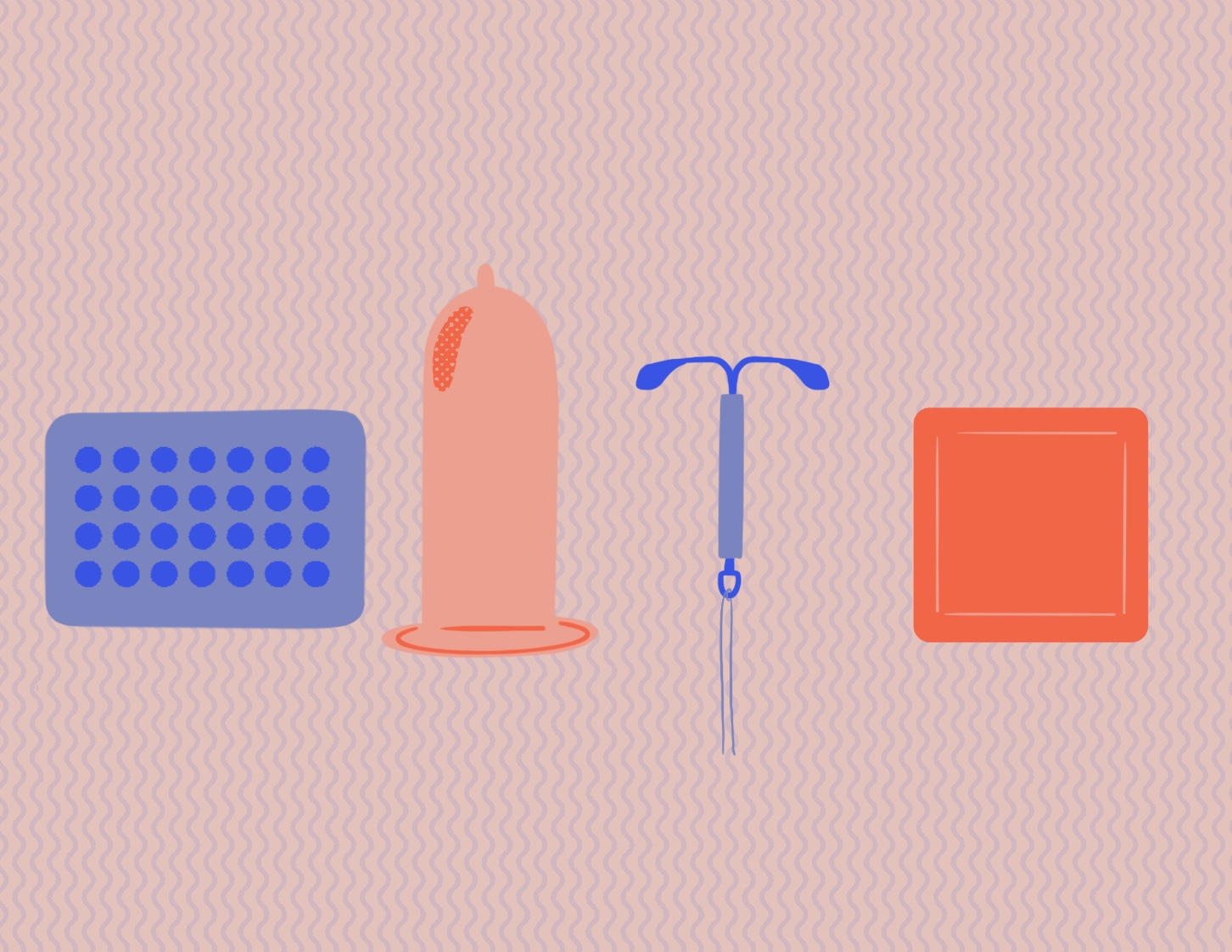From hormonal patches to good ‘ol fashioned condoms.
Joy of child-bearing aside, sex, in the 21st century, has just as much to do with pleasure as it does reproduction. Joy and intimacy are fundamental byproducts –– the stakes surrounding each of our sexual encounters need not be so wildly high. So, in order to hone in on pleasure, it’s essential that we take some necessary precautions. To start, protection with new partners to prevent the spread of STIs. Then: birth control.
Alas, navigating the birth control landscape can be an intimidating project at best. From hormonal pills (colloquially: “The Pill”) and patches to IUDs, injections, and of course, good ‘ol fashioned condoms, each route comes with its own roster of benefits and inconveniences. And it’s certainly no small task to determine which, exactly, is right for you. So, for the sake of concision, we’ve compiled all the top-level details about the four most popular methods of birth control for your perusal, before you book some time with your gyno to consider your options.
The Pill
The Overview: Likely the most common, especially amongst younger women—birth control pills, are a daily hormonal supplement. The hormones in the pill work to stop ovulation—which means your eggs can’t be fertilized.The
The Pros: It’s safe, affordable, painless, discrete and generally helps to regulate your period or temper pain. Some women even find that it can help clear up hormonal acne. Oh, and it’s 99% effective.
The Cons: While a pill is certainly easier to swallow (pun intended) than a surgical procedure, the daily chore of taking your dose is often both taxing and easy to forget –– which can put you in danger in terms of preventing future pregnancies. Also, on varying strains of the pill, women report mood swings, breakouts, and other hormonal symptoms. And be wary: the pill will not protect against STIs.
Condoms
The Overview: Ahhhh, the tried and true. You know the drill. These thin, stretchy pouches, generally made of rubber, are worn over the penis during penetration as a physical blockade preventing semen from entering a woman’s body. Each is disposable after a single-use.
The Pros: Condoms are the only—and I repeat only—method of birth control that prevents STIs by thwarting the spread of bodily fluids between you and your partner and limiting your skin contact. And unlike the above methods of birth control, you’ll only need to use one while engaging in sexual activity. There’s no daily routine or regular preventative ritual.
The Cons: Well, to start, plenty of folks find sex to be less pleasurable with a condom involved, being that it’s one degree of closeness removed from the equation. That said, it’s rare that couples report having serious trouble reaching completion with the contraceptive.In addition, because condoms act merely as a physical barrier, it’s plausible that they’ll break or slip off during intercourse and thus be rendered…entirely ineffective. In which case, emergency contraception like Plan B or an IUD is a great, secondary option.
IUD
The Overview: An intrauterine device (not surprisingly, a device that lives in your uterus) is a small piece of plastic generally in a T shape. There are two primary branches of IUD –– copper, and hormonal. The former work to stop fertilization by diverting sperm using copper, while the latter uses hormones in the very same fashion. Each is typically effective from 3 to 7 years.
The Pros:Unlike a pill, an IUD is centralized in your uterus, so it’s likely that any hormonal symptoms you might experience on the pill will dissipate. And, it’s wildly low maintenance. Upon implantation, once healed, you’ll spend years not having to worry about refilling prescriptions or swallowing daily dosages. Better yet, when implemented within 5 days of unprotected sex, the IUD can also work as a form of emergency contraception.
The Cons: While convenient once operational, an IUD does require surgical placement, and for many women, it’s not painless so to speak. After implementation, several weeks of pain and/or spotting are normal. That said, side effects tend to be fairly minimal after those early stages—so the future looks bright.
The Patch
Overview: Like with the pill, hormonal birth control patches work to stop the fertilization process and to halt ovulation. Rather than being ingested or inserted, however, the hormones enter your body through the skin by way of a stick-on patch worn on your belly, upper arm, butt, or back. Each has to be replaced weekly.
The Pros: Naturally, slapping on a patch is simpler than undergoing minor surgery, so that certainly keeps things simple. And the weekly cadence is less than that of the pill, meaning you’re less likely to forget or skip a dose.
The Cons: Depending on where you wear your patch, you may still experience some of the hormonal symptoms associated with the pill, being that it’s not localized in your uterus. Then, of course, human error. You run the risk of forgetting to refill your prescription or failing to swap in your new patch on time. Then, on top of that, you’ve got a patch on your skin. And if you’re the sort of person who will be plagued by this detail, we suggest going a different route.
Runners Up: In addition to all of the above, birth control can also come in the form of an insertable vaginal ring, a routine injection, and a diaphragm, among others. Be sure to consult your gynecologist about which, exactly, is the best option for you before getting started.
###
maude and Latina are working together to inform and educate Latinx communities on sexual wellness and health. Founded by Eva Goicochea, maude is a modern sexual wellness company built on quality, simplicity and inclusivity, on a mission to make intimacy better—for all people.









